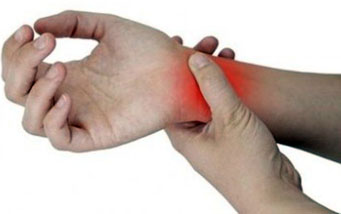
Introduction to
Carpal tunnel syndrome (CTS)
Carpal Tunnel Syndrome is a pinched wrist nerve that affects the use of the hand. When the nerve is compressed together with the blood vessels and tendons of the fingers and thumb, it causes numbness and pain. Assembly-line workers and packers, computer users, and persons who use poorly designed tools are most likely to develop this disorder, especially women between ages of 30 and 60. Any strenuous use of the hands -- repetitive grasping, twisting, or flexing -- aggravates the condition and interferes with work and everyday activities.
Carpal tunnel syndrome usually starts with feelings of weakness, pain, burning, numbness, or tingling in one or both hands. The discomfort affects the thumb, forefinger, middle finger and half of the fourth finger, making it difficult to clench the hand into a fist. Fingernails may look dull; the skin, dry and shiny. The symptoms are often worse at night or in the morning when circulation slows down. The pain may spread to the forearm and , in severe cases as far as the shoulder. The person can usually relieve the pain by shaking the hands vigorously or dangling the arms at the sides.